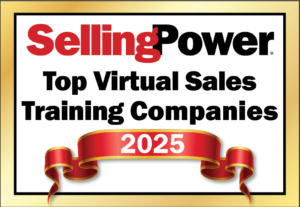How to Boost Software Sales and Revenue

In the AI age, the race to attract the most prospects, retain customers, and hit that magic “Rule of 40” rate isn’t linear. Indeed, it’s more like an obstacle course, where you don’t quite know what innovation or opportunity may arise to make your race more interesting…or challenging. Because of AI, cloud computing, and other developments, there has never been a greater opportunity for growth for sales leaders working in the fast-paced software industry. But with prospects and customers laser-focused on the bottom line and tangible results, it’s also more challenging to make a sale and retain customers long-term.
Against a backdrop where every sales agent has an AI sidekick, markets change overnight, and customers are consolidating technologies, software sales leaders need to continuously adapt their strategies to stay ahead. Success in 2025 (and beyond) hinges on differentiation, innovation, and a relentless focus on customer-centricity.
The state of software in 2025
Software companies are selling in a relatively healthy market, with the global SaaS (software as a service) growth rate projected to increase by 19.2% in 2025. By 2032, the SaaS market is predicted to hit $942.96 billion. Yet the industry is increasingly saturated, with prospects confused and unsure of what to invest in and what to ignore.
Further compounding the problem is the inevitable reality of AI hollowing out more and more SaaS applications in favor of faster, nimbler AI-driven assistants that are capable of returning results faster, in a more prescriptive manner, and with the necessary context. Trust, clarity, and demonstrating real value will play a critical role in sales relationships due to this noisy market. Building meaningful, contextually relevant relationships with your target audience and clearly showing them how your product can change their life will be vital.
However, achieving this level of personalized engagement requires deep technical knowledge and a thorough understanding of each customer’s business objectives. So, what should revenue leaders prioritize to maximize growth?
5 key tactics for software sales
1. Differentiate or disappear
It makes sense that the first tactic is to have an undeniable value proposition that’s relevant to every prospect. Know your target customer in minute detail, then apply your product’s benefits and features to their aspirations and pain points. Articulate your value proposition early and tailor every sales pitch to each prospect’s unique needs. Personalization isn’t just a competitive edge – it’s table stakes.
For complex software, a demo often won’t be enough to engage and excite a prospect with your product. Allowing them to explore the software for themselves – either with a trial period or virtual lab – enables a prospect to delve deeper into a product and personalize its features to their unique needs and processes.
It’s well known that encouraging someone to be hands-on with a product builds an emotional connection and greater likelihood to buy. That’s why test-drives are encouraged when buying a car. Why can’t we do the same with our software?
2. Deliver stand-out customer experiences
Once you have your prospects hooked, the other side of the growth equation is retention. Customer expectations have never been higher. They demand hyper-personalized, seamless experiences backed by the training needed to maximize your product’s value.
Providing virtual, role-specific training can be a major differentiator – increasing product adoption, improving customer outcomes, and unlocking upsell opportunities. Investing in customer education not only reduces churn but also strengthens long-term relationships. That extends beyond a knowledge base, to include a varied program of customer engagements that build their skills and confidence with your product. These can include annual flagship customer events for networking and training on-site, virtual labs that teach customers about new features and releases, customer communities for peer knowledge sharing, expert-driven webinars, and even Q&As or “Ask Me Anything” sessions with your leadership and product teams.
3. Explore alternative revenue streams
Having multiple revenue sources provides you with different ways to engage with prospects as well as additional upsell opportunities for existing customers. Revenue leaders must balance growth with efficiency. Explore creative strategies like reselling, entering new markets, or bundling services to capture growth opportunities without overstretching resources.
However, beware of distractions. Creating additional products or services can be an attractive idea to bolster bookings and grow revenue, but it can come at a serious cost to your core business and deplete the morale of your revenue teams if not properly executed. On the other hand, thoughtful planning and execution – aligned with your business vision and goals – can be highly additive.
4. Innovate relentlessly
Emerging technologies like AI, cloud computing, and low-code platforms are reshaping software offerings and market demands. Staying ahead requires a proactive approach to integrating these innovations into your offerings.
Minimum viable products and new features can be tested in sandbox and lab environments with selected groups to decide if they would be a success. You can assess each feature to understand how users interact with it and get feedback on if it aligns with their plans. If you have a resource such as a customer advisory board (CAB) or an industry analyst relationship, you can share your roadmap and go-to-market plans for their evaluation and ideas. This will help you identify innovations that will improve your top line and remove distractions.
5. Leverage strategic partnerships
Another way to increase revenue opportunities and innovate is through partnerships. Collaborating with vendors that have complementary products can drive innovation, expand your market reach, and create new revenue streams. Depending on the nature of the partnership, some partner enablement may be needed to ensure they can sell and support your software with confidence. Especially if your product is complex, with multiple versions or use cases.
AI’s role in sales growth
It’s impossible to talk about revenue in 2025 without mentioning AI. It’s evolving at an unprecedented rate, now involving autonomous agents that can partner with your sales teams to automate more tasks and make them more informed and efficient.
To harness AI effectively, sales leaders must ensure their teams understand its capabilities and limitations. Each sales rep must have the skills to adapt their use of AI to their role, prospects, compliance requirements, and sales tactics. For example, one rep may choose to use AI to assist with email replies and scheduling, whereas another may use it to understand a prospect’s latest ESG report and identify potential selling points hidden within it.
For those tasked with selling AI-powered solutions, a level of technical understanding will be needed to sell this effectively. Sales reps need the know-how to tailor their pitch with each prospect while being aware of compliance and legislative requirements that are relevant to your AI features. By training your sales team to be power users of your product, you equip them with the knowledge to adapt in the moment and build trusted relationships with prospects.
This was an approach taken by a Fortune 500 technology company that released emerging AI features that its sales team and partners needed to understand fully before approaching prospects. Taking a structured approach combining theoretical instructor-led learning with interactive, immersive components allowed its sellers to master the AI tool quickly, in time for launch. Job readiness scores increased, knowledge retention improved, and accessibility was boosted due to the program.
Build foundations today, for a stronger tomorrow
Many of the tactics that will serve your software sales in 2025 will build lasting foundations. There are some practices that your team will constantly return to, such as your approach to innovation, finding new avenues for revenue growth, and consistently communicating your differentiation in a tailored way.
Mark Mangelson is chief revenue officer at Skillable.
Get our Enewsletter
Get the latest sales leadership insight, strategies, and best practices delivered weekly to your inbox.
Sign up NOW →